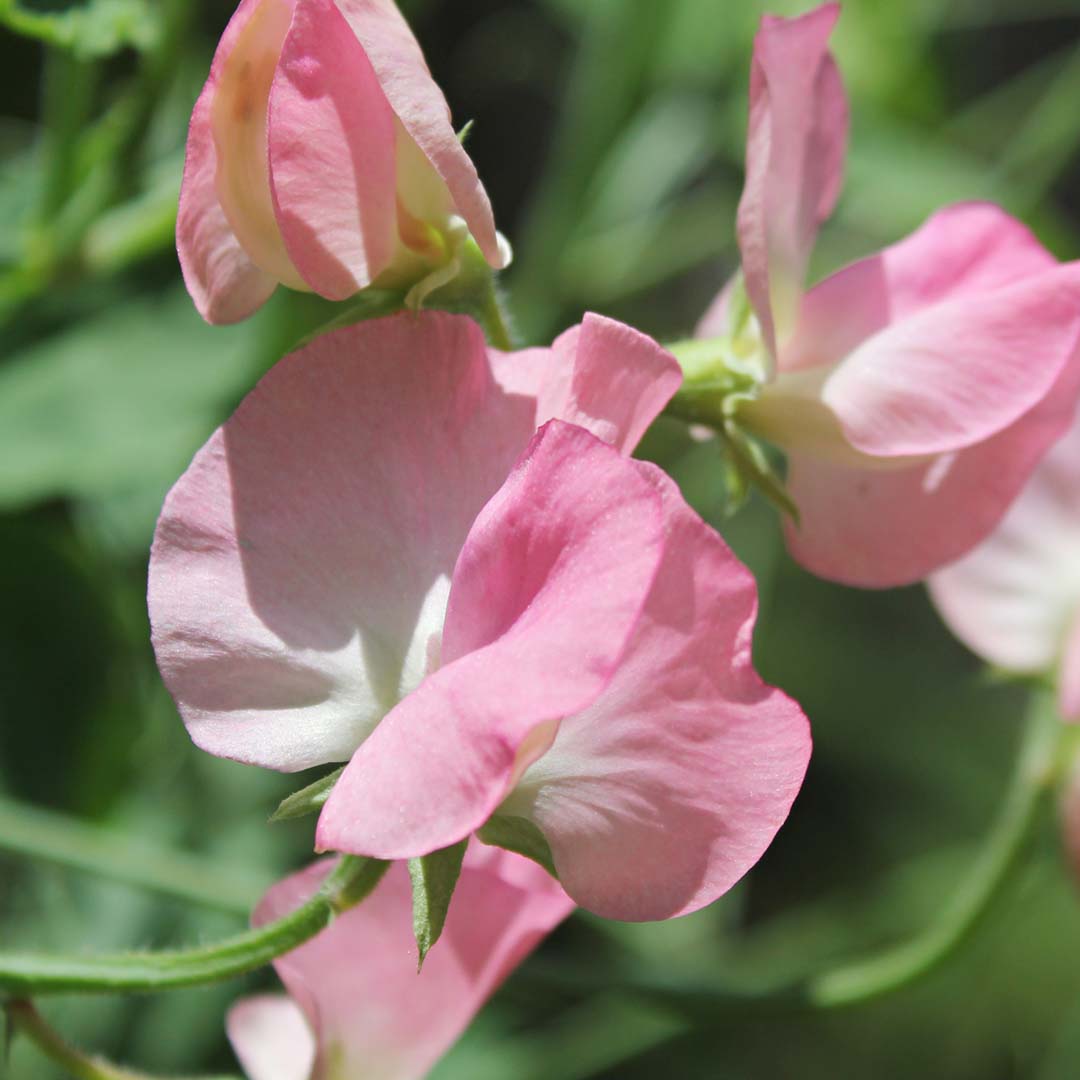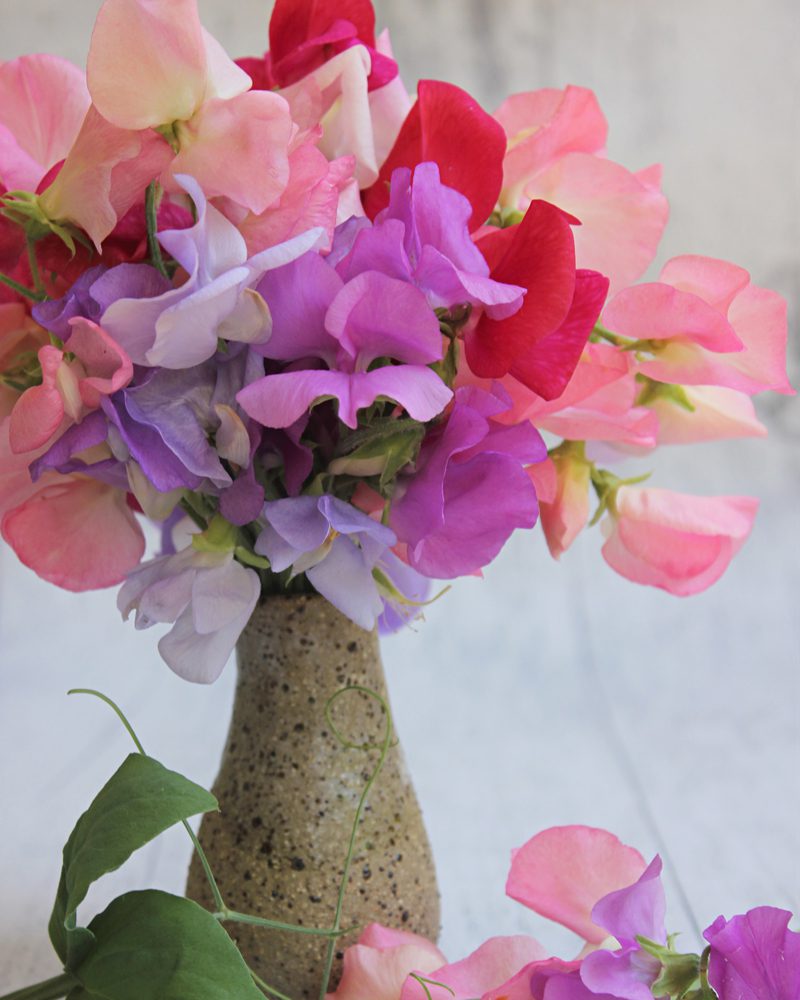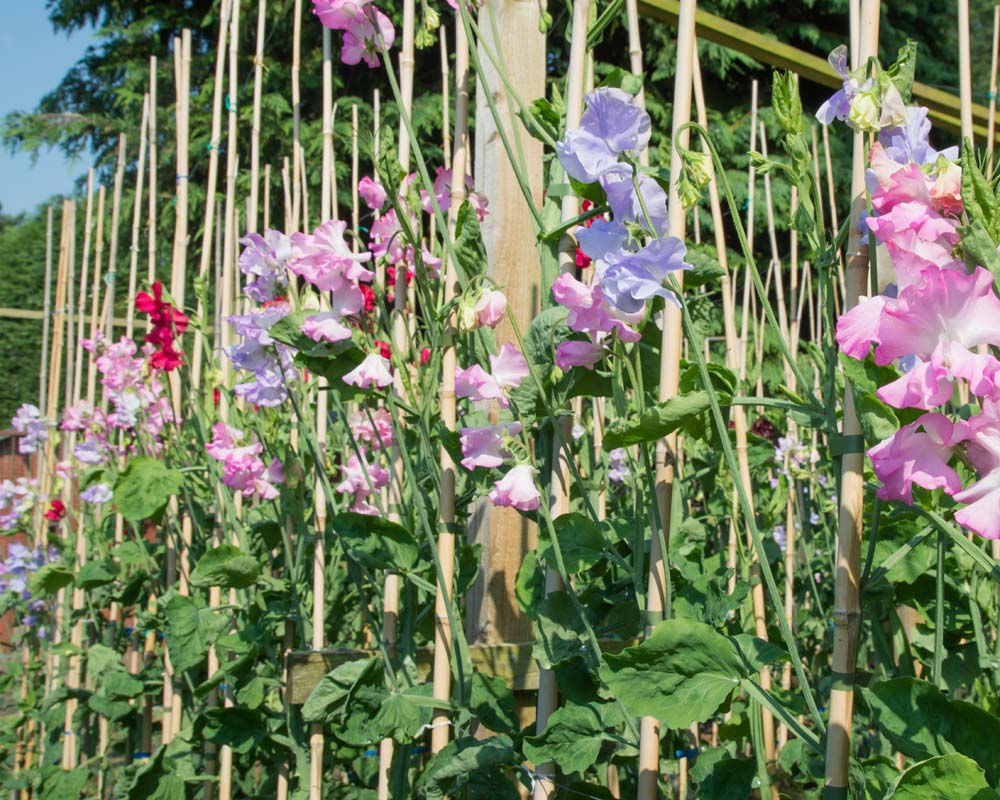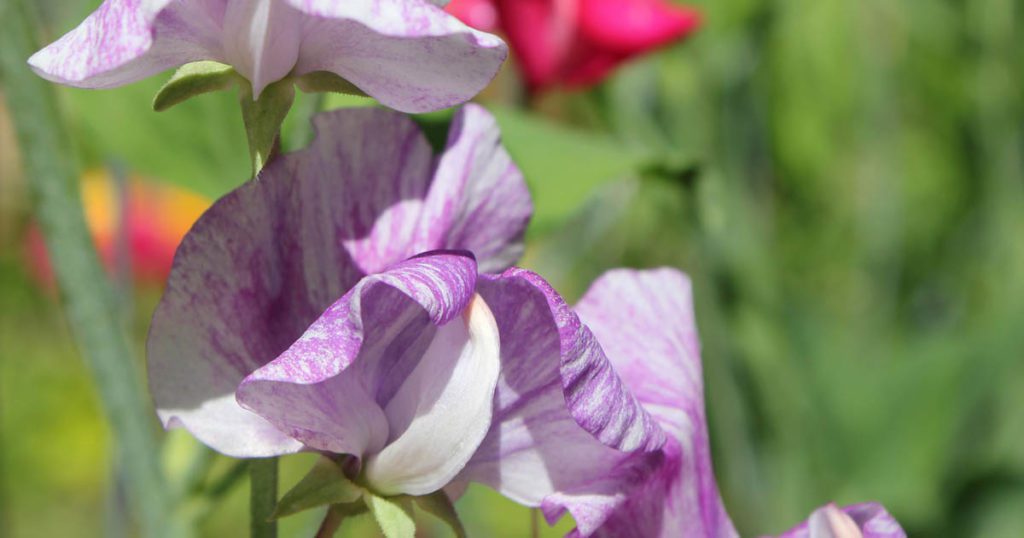There is something magical about wandering through the garden on a sunny day and having the perfume of sweet peas waft into your nostrils. Their bountiful blooms are also a treat for the eyes, both outdoors and indoors, and they support garden health by attracting beneficial bugs and fixing nitrogen in the soil. What’s more, sweet peas are wonderfully easy to grow, making them perfect for any gardener who wants a splash of colour, a cut-flower crop, or a garden that smells as good as it looks – or all three.
Give your sweet peas a head start
Planting sweet peas in autumn gives you a head start in spring, bringing the joy of early flowers while the rest of your garden wakes up from its winter slumber. So now is a fantastic time to start planning your sensational spring sweet pea display.
You can sow sweet peas direct in autumn – they are frost hardy and will survive the winter outside. However, my preferred method is to start seedlings in pots and overwinter them in a greenhouse or cold frame. This method gives me more control over the outcome; I don’t have to worry about a particularly wet and cold winter (sweet peas don’t like this weather combo), nor do I have to worry about freshly emerged seedlings being mowed down by slugs and snails in the garden. Even if you sow direct in autumn, it pays to start seedlings in pots as an insurance policy or for a later planting.
Here is my quick guide to getting your sweet peas started in pots this autumn.
Sweet pea quick-start guide
Seed selection
There are many stunning sweet pea varieties to choose from – stripey ones, frilly ones, large-flowered ones, and an enormous array of colours. There are even dwarf varieties such as ‘Bijou’ that don’t require staking and grow beautifully in pots, hanging baskets or as a groundcover.
If you specifically want cut flowers, look for varieties with longer stems. Some showy cultivars have lost the distinctive sweet pea fragrance, so it pays to check the variety information if you’re after a scented crop. There are also short day/early flowering varieties available, which are ideal if you want to get the earliest possible blooms from your autumn sowing.
Pots
Sweet peas like to put out a long tap root, so tall pots are best. Forestry tube pots are great as they encourage downward root growth, promoting a healthier root system. It’s worth asking around to see if you can find someone who has some leftover forestry tubes after tree planting.
Fill your pots with any decent seed raising mix, and you’re ready to start sowing!
Sowing
In the Murrindindi Shire, March is a good time to sow your sweet peas, allowing them to take advantage of the last of the mild weather. Many people choose St Patrick’s day (17 March) as their sweet pea sowing date.
Sow your sweet pea seeds about 2cm deep. Sweet peas generally have high germination rates, so two seeds per small pot should do the job. In a standard 50mm diameter forestry tube, you can plant a seed in each of two corners and keep them both if they germinate. After sowing, water them in well.
You can soak your sweet peas in water or seaweed solution overnight before planting to speed up germination, but it’s not essential. Some gardeners swear by soaking, but others aren’t fans. So you can try both soaking and planting dry seeds to see what works best for you. If you soak the seeds, only water when they start germinating or if the top couple of centimetres of potting mix dries out completely.
Keep your pots in an unheated greenhouse or cold frame and water sparingly to keep the potting mix damp but not soggy. You should see little green shoots poking up within a week or two.
Seedling care
Sweet pea seedlings grow slowly during the cold weather. Don’t be disheartened by this; they are likely putting their energy into growing strong root systems rather than lots of stems and leaves. When they have developed two sets of leaves, you can pinch out the growing tip emerging between the top set of leaves for bushier plants. Watering with seaweed solution every couple of weeks will assist with keeping seedlings healthy.
The winter waiting game
While you wait for your sweet peas to grow over winter, you can plan how they will fit into your garden. They’re climbing plants, so they will need something to latch onto. This gives you an opportunity to get creative and make a growing frame that will become a living sculpture once it’s covered in sweet peas. Other options for sweet pea support include tall, sturdy-stemmed plants such as corn or sunflowers, or existing structures in the garden such as fences or furniture.
Stay tuned for our spring issue, which will have tips on planting out your sweet pea seedlings and making the most of your autumn labour to get masses of flowers from those fragrant sweet sensations, sweet peas.






